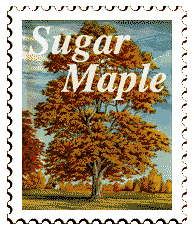
State Flower:
Wood Violet

State Bird:
Robin

State Tree:
Sugar Maple

State Flag:
Wisconsin's flag depicts the US shield and the national motto. The surrounding icons represent the State's main industries: mining, shipping, labor and agriculture. The cornucopia and lead-pile represent the State's abundant farms and minerals.

Famous Person:
Frank Lloyd Wright
Frank Lloyd Wright was born in Richland Center on June 8, 1867 to a young, 24-year-old school teacher and her 41-year old musician/preacher husband. The boy spent his early years working long hours on the family farm and just as he was leaving the farm to enter college his parents divorced. To supplement the family income, Wright worked for the dean of engineering at the University of Wisconsin but was bored with the architecture of that area. After two years, he took off to Chicago and joined the progressive architectural firm of Adler and Sullivan. He bought a house for his mother and young sister and designed and built a house for himself. In 1893 he started his own firm and began building "prairie style" country houses, known for their adaptation to the natural setting. "The freshness of the Earth itself . . . something essential to life," Wright explained. Soon his "prairie style" became the standard for 20th century residential housing. Wright's major works include the Larkin Building in Buffalo, built in 1904; Fallingwater, a house in Mill Run, PA, built in 1936; and the Guggenheim Museum in New York City, built in 1943. He also published four books: An Autobiography, published in 1932; An Organic Architecture, published in 1939; An American Architecture, published in 1955; and A Testament, published in 1957. He died April 9, 1959.